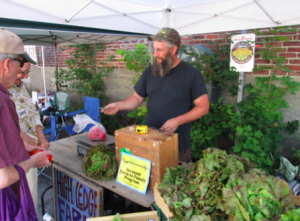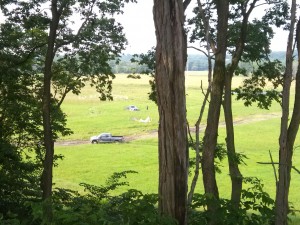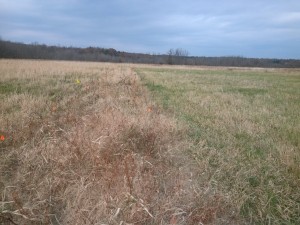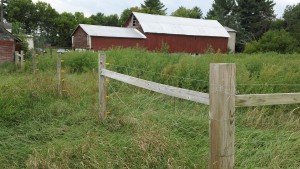The Betz family started High Ledge Farm in 1999. Paul and Kate Betz grow certified organic vegetables on a small parcel of 2.5 acres and manage a 4100 sq. ft. of greenhouses for plant and tomato production. They have a CSA program and sell their produce at the Montpelier Farmers’ Market.
Impact of Rain
The climate change effects, which worry the Betz family, are heavy rain events. These have resulted in soil fines rising to the soil surface and sealing it so that in seedlings have difficulty emerging. The Betz’ have experimented with the timing of their plantings and tried multiple plantings to increase the opportunities for seeds to germinate in these potentially adverse conditions.
This past year the Betz family planted their carrots twice because of the risk of soils sealing and preventing sufficient germination. Planting twice meant two opportunities for seeds to germinate.
The problem is that any time bare soils are exposed directly to rain with minimal cover to protect them from the impact of raindrops, erosion can occur and soil structure can deteriorate with the possibility of fines rising with the excess water. By minimizing the time that bare soils are exposed directly to rain and keeping soil covered with a crop as much as possible will in turn reduce the possibility of fines and soil surface sealing. The UVM Extension’s Center for Sustainable Agriculture has fact sheet about controlling drainage and increasing the water holding capacity of soils. Rather than take a gamble with weather forecasts to anticpate the possilbity of soil crusting, improving soil composition with organic matter and using winter cover crops to lessen impact of rain will help soils retains more water.
Protecting soils from rain
Improving soil composition with organic matter and using winter cover crops to lessen the impact of rain will help soils retains more water. The Natural Resource Council provide a useful guide on the factors affecting soil crusting and measures which can be taken to improve soil quality
UVM Extension agronomist Dan Hudson explains that healthy soils not only hold water but can also help stabilize the movement of water and soil particles. Cover crops are a critical part of the soil system as they help support microbial activity which further enhances soil structure and organic matter in the soils. The key to healthy soils are:
- organic matter in soils
- debris and plant cover on soil surface
- living roots in soils
Cover crops are a critical part of the soil system as they help support microbial activity which further strengthens soil structure and enhances organic matter in soils.
Too much tillage can damage living roots and the soil structure and living roots hence reducing the microbial activity, which makes nutrients available to plants.
As Hudson describes in his soil blog, healthy soils have high microbial activity with microbes secreting organic compounds and releasing nutrients in plant-available form.
Reducing risks with greenhouses
While the effects of climate change include heavy rains with impacts on soils and a longer growing season in Vermont, the temperature variations within the growing season are widening. This risk of a cold snap or heat wave can undermine any perceived benefit of a longer growing season.
Recognizing the variability and extremes of Vermont weather, farmers have turned to greenhouses and hoop houses in growing numbers. Their strategies for coping with variable weather start from the ground up. Maintaining and improving soil quality is essential with additions of organic matter, cover cropping, and minimizing tillage. Soils which have more plant matter including living roots in the soil and leaves on the soil have increased microbes which help retain more moisture during dry spells and can cope with absorbing more rainfall during wet periods.
Essentially, healthy soils with high organic matter perform better in both dry and wet weather periods
While soils with higher organic matter content can help mitigate wider ranges in precipitation, greenhouses help mitigate wider ranges in temperature. Using a greenhouse to control the environment, the Betz family benefits at both the start and the end of the growing season so that the swings in temperatures during Vermont’s shoulder seasons of spring and fall don’t result in swings in income.
Contributions from Catherine Lowther, Goddard College, Faculty in the BA in Sustainability Program, Chair of the Sustainability Committee and UVM Extension Center for Sustainable Agriculture




